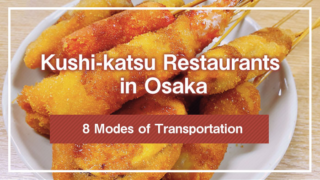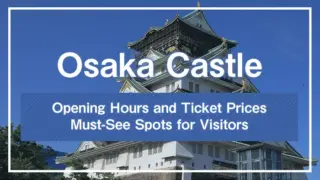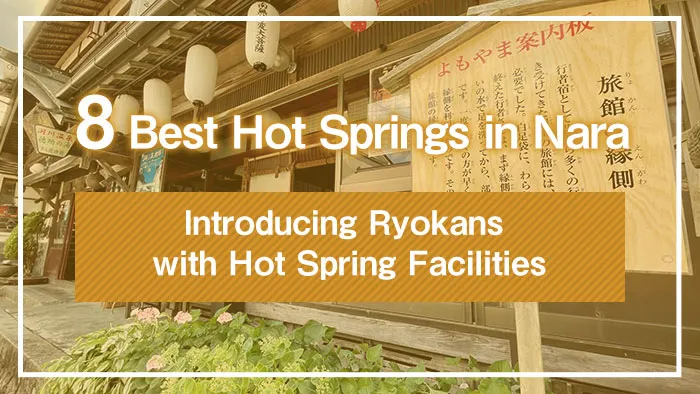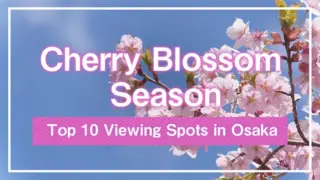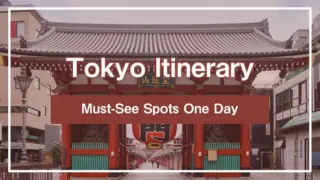When thinking of Nara, many people might imagine historic temples, shrines, and adorable deer. Actually, Nara also has hot spring areas nurtured by history and nature. These include hot springs mentioned in the Manyoshu anthology, scenic hot springs overlooking World Heritage sites, and hot springs famous for their skin-beautifying effects.
Japanese hot springs are not just bathing facilities but have long been cherished as places for therapeutic bathing. Soaking in the natural blessing of hot springs provides not only physical and mental relaxation but also a valuable opportunity to experience traditional Japanese culture. This article introduces carefully selected hot springs in Nara Prefecture recommended for international tourists.
- 1. Tips for Bathing in Hot Springs
- 2. 8 Best Hot Springs & Ryokans in Nara
- 2-1. Dorogawa Onsen | Dorogawa Onsen Visitor Center
- 2-2. Totsukawa Onsen | Iorinoyu
- 2-3. Nosegawa Onsen | Hotel Nosegawa
- 2-4. Yumori Onsen | Hotel Suginoyu
- 2-5. Shigisan Onsen | Shigisan Kanko Hotel
- 2-6. Horai Onsen | Nara Park Hotel
- 2-7. Tempyo no Yu Onsen | Nara Royal Hotel
- 2-8. Natural Yamato Onsen | Nara Kenko Land
- Conclusion
1. Tips for Bathing in Hot Springs
To fully enjoy hot springs, you need to understand traditional Japanese bathing etiquette. When entering a hot spring facility, first check the entrances for men’s and women’s baths.Generally, the women’s bath is indicated by red noren curtains or signs, while the men’s bath is marked with blue noren curtains or signs. In Japanese hot springs, wearing swimwear or underwear is generally prohibited, so you remove all clothing in the changing room. If you’re uncomfortable with this, consider using a private bath.
Before entering the bath, wash your body at the washing area. The washing area is equipped with showers, faucets, and chairs. Use the provided soap and shampoo or bring your own. Be careful not to splash water on others while thoroughly rinsing off.
It’s proper etiquette to perform “kakeyu” before entering the bath. Kakeyu involves scooping bath water with a bucket and gradually pouring it from your feet upward to acclimate your body to the water temperature. Enter the bath quietly and slowly. Hot spring water is often quite hot (40-44°C), so take your time getting used to it. Be careful not to dip your towel in the bath.
2. 8 Best Hot Springs & Ryokans in Nara
Throughout Nara, where history and nature coexist, there are hot spring areas with unique qualities and attractions. Below, we introduce eight recommended hot springs and ryokans where you can enjoy hot springs in Nara Prefecture.
2-1. Dorogawa Onsen | Dorogawa Onsen Visitor Center
Dorogawa Onsen Visitor Center is located at the entrance to Dorogawa Onsen village at the foot of Mt. Omine. It reopened after renovation on April 25, 2024. The building extensively uses Yoshino cedar, and the indoor bath is made with hinoki cypress, creating a pleasant space filled with wood fragrance.
The water quality is a mild alkaline simple hot spring that is gentle on the skin. Mild alkaline simple hot springs are said to be effective for neuralgia, muscle pain, joint pain, motor paralysis, chronic digestive disorders, and sensitivity to cold. With a history of healing mountain ascetic practitioners’ fatigue, soaking in these waters will help you relax both physically and mentally.
2-2. Totsukawa Onsen | Iorinoyu
Iorinoyu is a public bathhouse with a pleasant wood fragrance and traditional atmosphere. Located on the shore of Futatsuno Dam Lake, you can enjoy beautiful views of the dam lake while bathing in the indoor bath. Iorinoyu also features hand baths, foot baths, and the prefecture’s first drinking spring, giving it the feel of a hot spring park.
The water quality is sodium bicarbonate chloride spring. Sodium bicarbonate chloride springs are known for skin-smoothing beauty effects and heat-retention effects after bathing. They are also expected to be effective for cuts, burns, neuralgia, diabetes, and fatigue recovery. A distinctive feature of Iorinoyu is its commitment to natural flowing spring water, using 100% natural hot spring water without circulation, reuse, heating, chlorine disinfection, or dilution. The water is also drinkable, with a slightly salty and bitter taste, but it’s mild and easy to drink, warming you from the inside.
2-3. Nosegawa Onsen | Hotel Nosegawa
Hotel Nosegawa is a hot spring inn quietly situated in Nosegawa Village, Nara Prefecture, near the World Heritage sites of Mt. Koya and Kumano Kodo. Surrounded by rich nature, Hotel Nosegawa offers a quiet and peaceful time. All guest rooms overlook the Kawarahido River, which is part of its charm. The hotel is popular with Kumano Kodo Kohechi hikers and Mt. Koya tourists, and is also used as a day-trip bath stop from Mt. Koya.
The water quality is a highly alkaline hot spring with a high pH value. It is colorless, transparent, tasteless, and odorless, gentle on the skin, and popular with women. It’s a hot spring that soothes bodies tired from visiting Mt. Koya or walking the Kumano Kodo.
2-4. Yumori Onsen | Hotel Suginoyu
Hotel Suginoyu is a hot spring hotel in Kawakami Village, Yoshino District, Nara Prefecture. Located in the lush natural surroundings of Oku-Yoshino Valley, you can enjoy beautiful scenery, hot springs, and cuisine made with local ingredients.
Hotel Suginoyu prides itself on its open-air bath where you can bathe while viewing the nature of Oku-Yoshino Valley. The water quality is alkaline simple sulfur, which is expected to be effective for cuts, peripheral circulatory disorders, sensitivity to cold, autonomic nervous system instability, and fatigue recovery.
2-5. Shigisan Onsen | Shigisan Kanko Hotel
Shigisan Kanko Hotel is the only hotel on Mt. Shigi with natural hot springs. The guest rooms are mainly Japanese-style rooms where you can feel Japanese ambiance. From the open-air bath, you can enjoy magnificent seasonal views. Day-trip bathing is also available. The hot springs are expected to be effective for shoulder stiffness, neuralgia, and fatigue recovery.
Shigisan Onsen is located in Sango Town, Ikoma District, Nara Prefecture. It’s a hot spring area surrounded by the rich nature of Mt. Shigi, where you can enjoy history, spectacular views, and quality hot springs. Mt. Shigi is known as the place where Prince Shotoku prayed for victory when defeating Mononobe no Moriya. The origin of Shigisan Onsen includes a legend that the thunder god caused a well to spring up as a return of favor to a wealthy man.
2-6. Horai Onsen | Nara Park Hotel
Nara Park Hotel is one of the few hot spring hotels in Nara City with its own spring source. The guest rooms are Japanese-style with low beds. Nara Park Hotel has a spacious large bath and garden open-air bath where you can leisurely enjoy the hot spring. Day-trip bathing is also available.
The water quality is a simple hot spring containing sodium bicarbonate. It has a soft touch on the skin and is also called a “beauty hot spring.” It is said to be effective for neuralgia, muscle pain, motor function disorders, chronic digestive disorders, and fatigue recovery.
2-7. Tempyo no Yu Onsen | Nara Royal Hotel
Tempyo no Yu Onsen is a hot spring facility on the first basement floor of Nara Royal Hotel. It uses natural hot spring water that springs from a corner of the Heijo Palace Site, featuring a spacious large bath and sauna. In June 2022, the men’s sauna was renovated with the introduction of a Finnish sauna stove.
The water quality is sodium-chloride/bicarbonate spring. It is said to be effective in removing old dead skin cells and smoothing the skin. It is expected to be effective for neuralgia, muscle pain, joint pain, frozen shoulder, bruises, sprains, chronic digestive disorders, sensitivity to cold, and fatigue recovery. Nara Royal Hotel also offers relaxation services such as stone spa, body care, and foot therapy, allowing you to refresh both physically and mentally.
2-8. Natural Yamato Onsen | Nara Kenko Land
Nara Kenko Land is a 24-hour hot spring theme park. In addition to various hot springs, you can use pools, saunas, and stone spas. Furthermore, there are indoor leisure pools, karaoke, game corners, and indoor playgrounds for children, so families can enjoy a full day of activities.
Nara Kenko Land is recommended after hiking the Yamato Path or for outings on rainy days.Staying at Nara Plaza Hotel, which is attached to Nara Kenko Land, allows you to enjoy the hot springs and facilities at a more leisurely pace.
A Comprehensive Guide to Visiting Nara: Enjoy the City of Deer and History!
Conclusion
Nara has attractive hot spring areas nurtured by history and nature. From secluded hot springs bubbling up in quiet mountain villages to open-air baths overlooking beautiful scenery, and hot spring theme parks that the whole family can enjoy, there is a wide variety.
Each has different water qualities and characteristics, so you can enjoy yourself wherever you go in Nara. When traveling to Nara, why not spend a blissful time refreshing both physically and mentally in the rich natural surroundings while observing hot spring etiquette?
*This article was created based on information as of April 2025.



